Lower back pain can really throw a wrench in your day, making even simple tasks feel like a challenge. If you’re nodding along, you’re in the right place. This guide offers practical exercise and helpful tips drawn from expert recommendations to not only ease that nagging pain but also pave the way for a healthier, more resilient back. Want to start this journey? Let’s dig in.
Key Takeaways
- Incorporating both stretching and strengthening exercises into a daily routine is essential for relieving lower back pain and promoting long-term back health.
- Key stretches such as the Knee to Chest, Hamstring, and Cat-Cow can effectively reduce tension in the lower back and improve flexibility.
- Recognizing red flags such as sharp pain or numbness is crucial and seeking professional help can provide tailored exercises and support for managing lower back pain.
What Causes Lower Back Pain?
Before we dabble into solutions, let’s briefly touch on some common culprits behind lower back pain.
Lower back pain can arise from a variety of sources, both acute and chronic. One of the most common causes is muscle or ligament strain, which often results from lifting heavy objects improperly, sudden awkward movements, or overuse during activities like sports or manual labor.
Repetitive stress or poor body mechanics can gradually weaken the muscles and ligaments that support the spine, making them more susceptible to injury.
Weak core muscles are another significant contributor. The core, including the abdominal, back, and pelvic muscles, acts as a natural brace for your spine. When these muscles are underdeveloped or fatigued, the lower back is forced to bear more strain, increasing the risk of pain and injury.
Limited flexibility, particularly in the hamstrings can also play a major role. Tight muscles restrict movement and place additional stress on the lumbar spine, which can lead to discomfort and even more serious issues over time.
Additionally, daily habits and lifestyle factors such as prolonged sitting, poor posture, inadequate ergonomic support at workstations, and a sedentary lifestyle can all contribute to the development or persistence of lower back pain.
Lastly, psychological factors like stress and anxiety have been linked to increased muscle tension and heightened pain sensitivity in the lower back.
Understanding these potential factors is the first step towards effective management.
Effective Stretches for Lower Back Pain Relief
Here’s the good news: you have the power to make a difference. This difference lies in taking simple, targeted stretches. When you make this a part of your daily routine, you’re setting the foundation for relief from lower back pain and your overall health.
Below are some of the most effective, expert-recommended stretches for lower back pain relief.
Knee to Chest Stretch
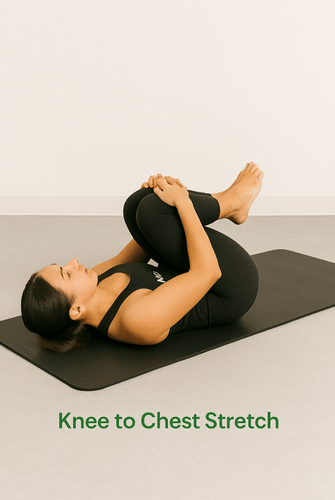
This is a simple yet powerful move that can really ease tension in your lower back and glutes. To start, lie on your back with your knees bent and feet flat on the floor. Gently bring one knee towards your chest, using both hands to hold it there for about 30 seconds, then switch to the other leg. This helps relax those back muscles, and you can repeat it 2 to 3 times on each side. Just remember to keep your back relaxed and avoid any straining.
Hamstring Stretch
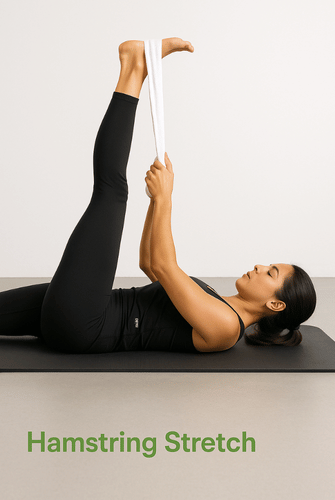
Tight hamstrings can pull on your pelvis and strain your lower back. Lie flat on your back, keeping one leg bent and the other extended. Use a towel or strap to gently pull your straight leg toward you, maintaining a slight bend in the knee. Hold for 20–30 seconds, then switch legs. This stretch targets both your hamstrings and those back muscles, which can improve your mobility and reduce muscle strain.
Cat-Cow Stretch
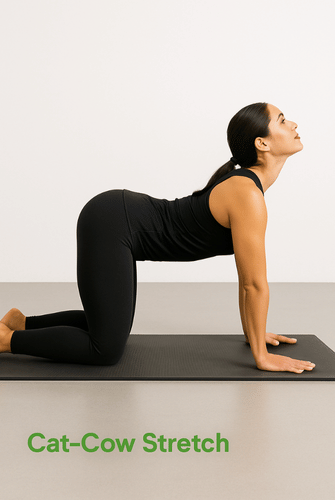
Take this stretch seriously if you want to improve flexibility and mobility in your spine. Start on your hands and knees, and then gently alternate between arching your back like a cat and rounding it like a cow. Doing this once or twice a week, with about 10 repetitions each time, can help relieve lower back pain and improve how your spine moves.
Seated Forward Bend
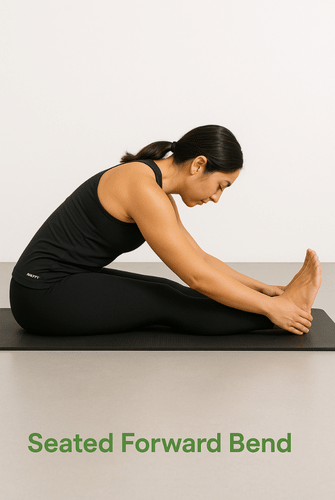
This is an effective stretch to boost flexibility in your hamstrings and those lower back muscles. Sit with your legs straight out in front of you and gently reach forward towards your toes, keeping your knees straight (it’s okay if your legs are slightly bent). Make sure you keep your back straight and hinge from your hips to avoid rounding your spine.
Lower Back Rotational Stretch
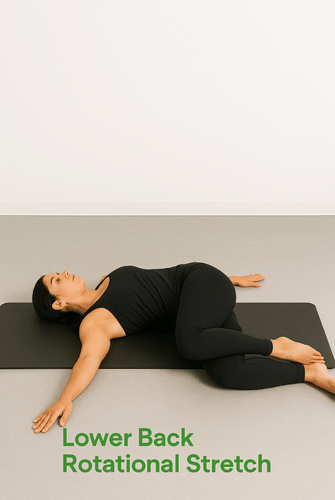
Lie on your back with your knees bent and feet flat on the floor. Gently let your bent knees roll to one side, hold for a few seconds, and then come back to the center before repeating on the other side. Doing this gentle stretch 2 to 3 times on each side can reduce lower back pain and enhance your flexibility.
Spinal Twist

Here’s a way to enhance your spinal flexibility and release tension in your lower back. Sit with one leg straight and cross the other leg over it. Twist your upper body towards the bent knee, holding the position for a few breaths before switching sides. Remember to perform this stretch gently to avoid any strain on your back, and ease out of it slowly if you feel any pain.
Strengthening Exercises for Long-Term Back Health
While stretching offers immediate relief, strengthening exercises are absolutely vital for the long-term health of your back and preventing future lower back pain. When you engage your core muscles, you’re essentially stabilizing and protecting your lower back, which lowers your risk of injury. Muscles that are both stronger and more flexible are less likely to get injured, which really boosts your spinal health.
Some key exercises to incorporate includes:
Bridge Exercise
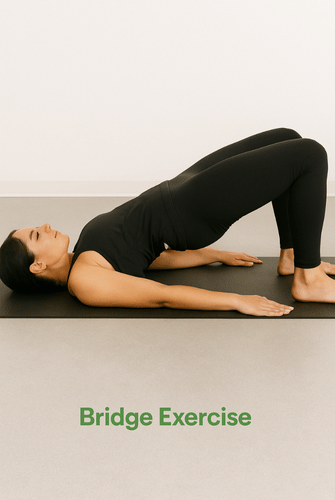
This is definitely one of the best exercises for improving core strength.Think of this as a fantastic way to strengthen the muscles that support your lower back. To get the best results, lie on your back with your knees bent and feet flat on the floor. Slowly lift your hips off the ground until your body forms a straight line from your shoulders to your knees. Make sure to tighten your abdominal muscles before you lift.
Pelvic Tilts

These might seem small, but they’re a key exercise for enhancing core strength and reducing tension in your lower back. Lie on your back with your knees bent and feet flat. Gently tilt your pelvis upward, engaging your abdominal muscles, and hold that for about five seconds before relaxing. You can repeat this process as many times as possible.
Superman Exercise

This exercise targets both your upper and lower back, helping to build overall spinal strength. Lie on your stomach with your arms extended forward. Then, simultaneously lift your arms, chest, and legs off the ground, and slowly lower them back down. If it feels too intense at first, you can modify it by placing your fingers on your temples and extending your elbows out while you do the exercise.
Daily Routine Adjustments to Support Back Health
Supporting your lower back health goes beyond dedicated workout sessions-it’s about integrating simple, effective habits into your everyday life. Small, consistent adjustments can strengthen your back, improve posture, and reduce the risk of injury, helping you maintain long-term spinal wellness.
Want to keep lower back pain at bay? Consider these:
Standing Lumbar Extension
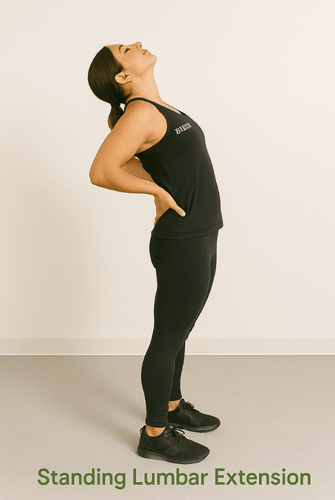
This simple movement can help alleviate lower back pain by gently leaning backward. Stand tall with your feet about shoulder-width apart and place your hands on your lower back for support. Gently lean backward, allowing your spine to extend while your hands provide stability.
Shoulder Blade Squeeze
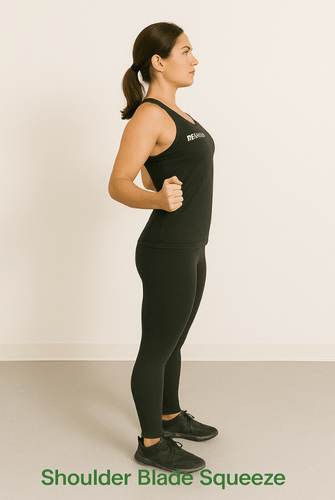
Perfect for desk workers, this simple exercise strengthens upper back muscles and encourages proper posture. Sit up straight, squeeze your shoulder blades together, hold for five seconds, then release.
Walking for Back Health
Never underestimate the power of daily walking. Regular walks increase circulation, promote spinal mobility, and reduce stiffness in the lower back. Start with manageable distances and gradually increase your pace and duration to maximize benefits for your back and overall health.
Warm-Up and Cool-Down Routines
Before any physical activity, prepare your body with a brief warm-up-light cardio like walking or gentle movements such as arm circles and leg swings. This increases blood flow to your muscles and lowers injury risk. After exercising, cool down by holding stretches longer than usual, focusing on the stretches covered earlier. This promotes flexibility and helps reduce muscle soreness.
Bonus tip: While exercise is beneficial, listen to your body is equally important. If you find that stretching causes increased pain or numbness, stop the exercise immediately.
Complementary Practices for Back Health
Exercise is undeniably the foundation of a healthy back, but it’s just one piece of the puzzle. To truly improve your back health, incorporating complementary practices can make all the difference. Here’s how:
Tune Into Your Body: Recognize the Red Flags
Your body is constantly communicating with you, learning to listen is another ball game entirely. While mild discomfort during exercise can be normal, sharp pain, numbness, tingling, or weakness in one or both legs are warning signs of possible nerve compression or other serious issues. If you experience any of these symptoms, seek medical attention promptly.
Likewise, if your pain worsens after exercise or you have severe chronic symptoms, don’t hesitate to consult a healthcare professional. Early intervention can prevent complications and guide you toward the right treatment.
Harness the Power of Heat and Ice Therapy
Managing pain and inflammation doesn’t always require medication. Heat and ice therapy are simple, effective tools you can use at home. Applying heat helps relax tight muscles and increase blood flow, easing stiffness and chronic discomfort.
On the other hand, ice is ideal for acute pain or inflammation, numbing the area and reducing swelling. Pay attention to how your body responds and choose the therapy that feels best for your specific pain.
Braces and Support Belts
Back braces and support belts can offer extra stability during activities that strain your lower back. They help reduce movement that might aggravate pain and provide a sense of security. However, these supports should be used thoughtfully as overreliance can weaken your muscles over time. Use them as a temporary aid, tailored to your comfort and specific needs.
When to Seek Professional Help
Knowing when to get expert advice can make all the difference in managing lower back pain. While most cases improve with rest and gentle movement, certain symptoms are your body’s way of waving a red flag, don’t ignore them.
Stop and Seek Immediate Medical Attention If You Experience:
- Sudden loss of sensation or movement in your legs.
- Loss of bladder or bowel control.
- Severe, sharp pain that radiates down one or both legs, especially if accompanied by numbness, tingling, or weakness.
These symptoms could signal serious nerve compression or other urgent conditions that require prompt evaluation.
See Your Doctor If:
- Your pain persists beyond four to six weeks, or worsens over time despite home care.
- The pain is constant, intense (especially at night), or disrupts your daily activities.
- You notice unexplained weight loss or a lump/swelling in your back.
- You have a history of cancer or osteoporosis.
- You’ve experienced trauma, such as a fall or accident.
Curious about what a professional can do?
A healthcare provider or physical therapist can pinpoint the underlying cause of your pain and design a personalized treatment plan. This might include targeted exercises, manual therapy, or other interventions to restore mobility and reduce discomfort.
Professional guidance ensures you’re performing movements safely and effectively, reducing the risk of further injury.
While you wait for care, you can use ice or heat therapy and supportive braces as needed for comfort, but avoid any activities that worsen your symptoms.
The bottom line is to not tough it out if your pain is severe or persistent.
Your Journey to a Healthier Back Starts Now
There you have it, a comprehensive set of exercises and daily adjustments to help you manage and prevent lower back pain. The strategies discussed can alleviate discomfort, improve your mobility, and maintain a healthy back for the long haul.
But remember, consistency is the key to seeing the best results. Gentle stretching, strengthening exercises, and mindful daily habits amongst others are your allies in taking control of your back health and enjoying a more pain-free life.
Feeling empowered to start your journey towards a healthier back? At RxFit, we understand that life gets busy, which is why we make fitness fit into your schedule. Just like the information shared here for lower back pain relief, our in-depth personal training sessions focus on fitness and accountability to help you stay on track and meet your goals.
Our clients in Austin rave about the personalized attention and effective results they experience with RxFit. You too can be a part of them. Take the first step towards a stronger, healthier you.
Frequently Asked Questions
To effectively relieve lower back pain, it’s beneficial to focus on gentle stretches like the Knee to Chest and Hamstring Stretch, along with strengthening exercises such as the Bridge and Pelvic Tilts.
Aim to perform these exercises at least twice a week to see results. Consistency is essential for improving flexibility and overall back health.
You should seek professional help if you experience sharp pain, numbness, tingling, or weakness in your legs, or if your pain persists after four to six weeks of home remedies.
Yes, walking can greatly improve your lower back health by promoting mobility and reducing stiffness. Gradually increasing both the distance and speed of your walks will yield even greater benefits for your overall physical well-being.
Heat therapy, braces, and support belts can effectively manage lower back pain by providing stability and alleviating discomfort. It’s important to select tools that suit your individual comfort and pain levels for the best results.


